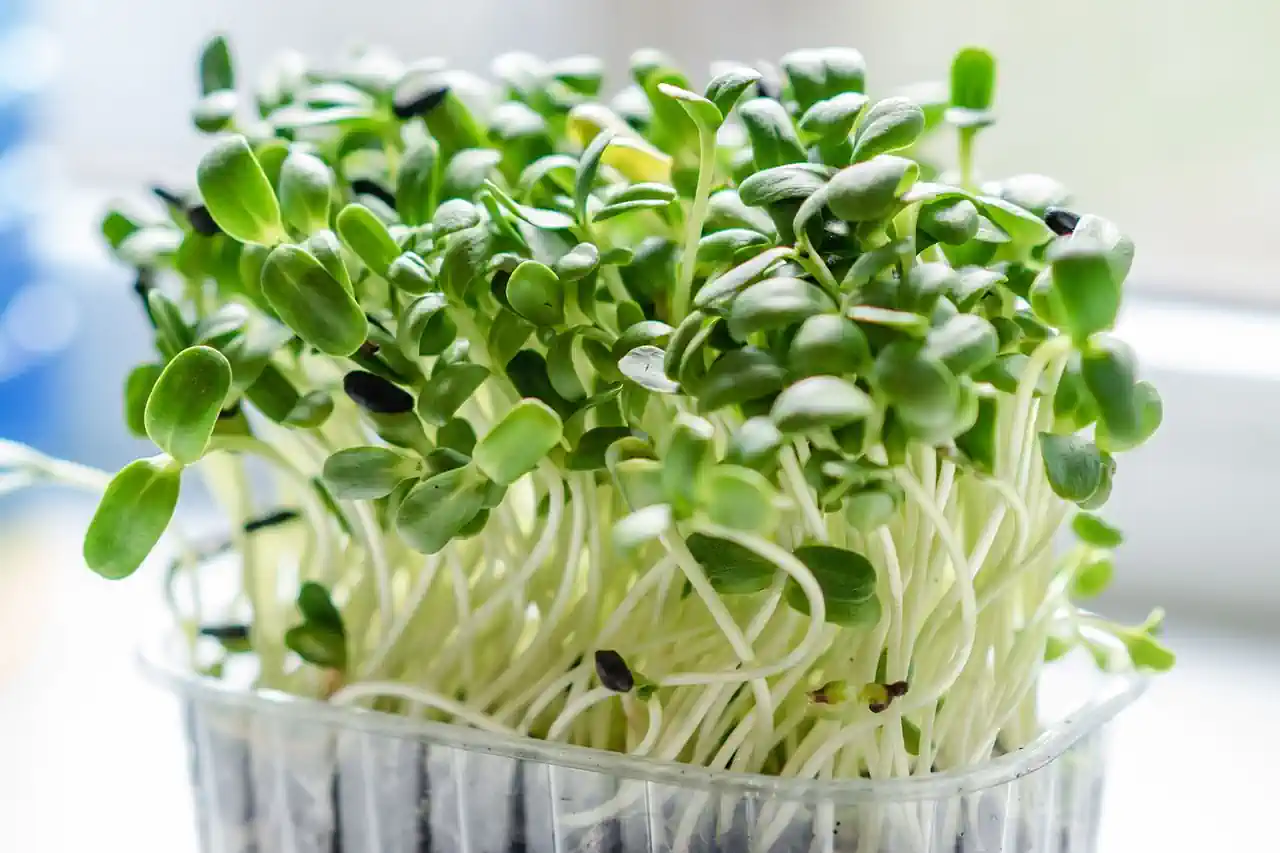A Guide on How to Make Money Selling Microgreen in 2023
Want to learn how to make money selling microgreen and how much money you can make? Microgreens are a type of edible green that are grown from the seeds of various vegetables, herbs, and other plants. They are gaining popularity because of their high nutritional value and intense flavor. Not only are microgreens good for you, but they are also good for the environment, as they can be grown in small spaces and do not require the use of pesticides.
The average selling price for microgreens is between $25 and $40 per pound and this means that with the right growing conditions and efficiency, a microgreens operation can yield a significant profit.
- If you sell 8 oz of microgreens for $40 per pound, you will make $20 per tray
- If you harvest 12 oz per tray and sell for $25 per pound, you will make $30 per tray.
So the demand for microgreens continues to grow, many people are looking for ways to cash in on this trend. Selling microgreens can be a profitable business, as they fetch a high price at farmers’ markets, grocery stores, and restaurants. With the right knowledge and equipment, anyone can start a microgreens business and make a profit.
What is Microgreens?
Microgreens are a type of young edible green that are grown from the seeds of various vegetables, herbs, and other plants. They are harvested at an early stage of development, usually within 1-3 weeks from sowing, when the seed leaves and the first true leaves have formed. They can be grown in soil, using trays or containers, and are usually consumed fresh, as a garnish or ingredient in salads, sandwiches, and other dishes. They are gaining popularity for their high nutritional value, intense flavor, and for being a sustainable food source that can be grown in small spaces without the need for pesticides.
How To Make Money Selling Microgreens
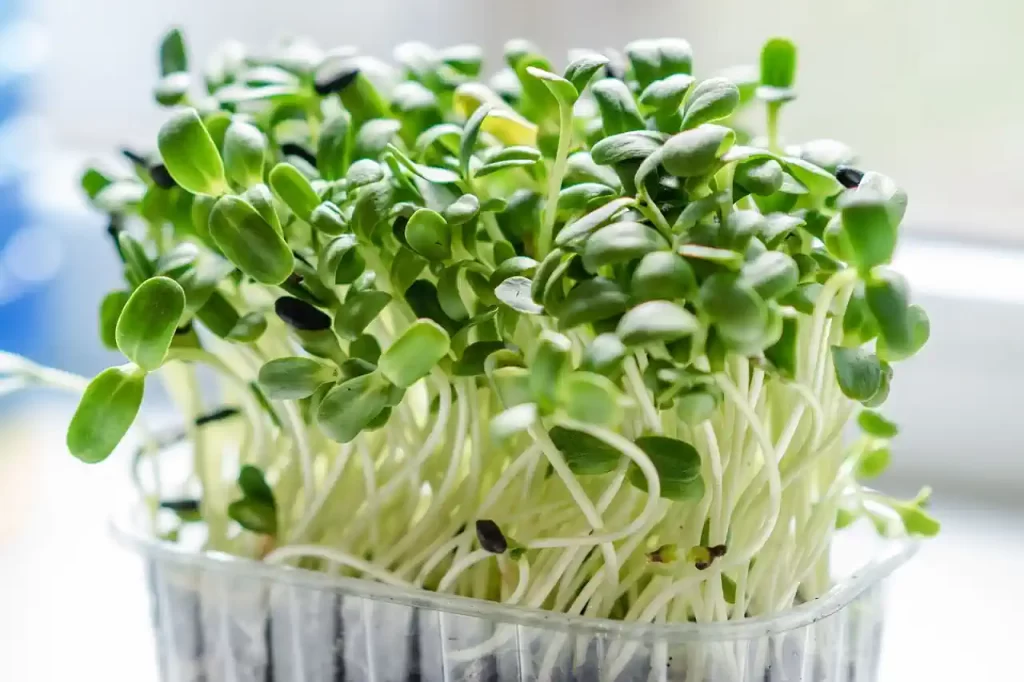
Choosing the right microgreens to grow and sell
When it comes to learning how to make money selling microgreens, it’s important to choose the right varieties to grow. One key factor to consider is the demand for different types of microgreens in your area. For example, if you live in an area with many health-conscious consumers, you may want to grow microgreens such as broccoli, kale, or radish, which are high in nutrients.
In addition to researching the demand for different types of microgreens, it’s also important to consider the ease of growth and maintenance for different varieties. Some microgreens are easier to grow and require less maintenance than others. For example, alfalfa and clover are relatively low-maintenance microgreens that can be grown indoors or outdoors.
When selecting the microgreens to grow and sell, it is crucial to take in account the suitability of the microgreen to your growing environment. Some microgreens prefer specific temperature, light levels, soil and humidity, so it’s a good idea to research the optimal growing conditions for each variety you are interested in. Furthermore, choosing microgreens that are well-suited to your local climate will help ensure that your crop thrives and yields high-quality microgreens.
By taking these factors into consideration, you’ll be able to choose the right microgreens to grow and sell, maximizing your chances of success in the microgreens market.
Setting up your microgreens operation
Once you’ve chosen the right microgreens to grow and sell, the next step is to set up your microgreens operation. This includes choosing the right growing equipment and supplies, as well as planning your growing schedule to ensure a steady supply of microgreens.
When choosing the right growing equipment and supplies, it’s important to invest in high-quality materials that will last. This may include things like trays, pots, soil, and lighting. It is also important to consider if you prefer to use organic or non-organic methods.
Setting up your microgreens operation is a crucial step in making a profit by selling microgreens including:
- Choosing the right growing equipment and supplies:
- Investing in high-quality materials such as trays, pots, soil, and lighting
- Deciding if you prefer to use organic or non-organic methods
- Planning your growing schedule:
- Planning your schedule so that you have a steady supply of microgreens ready for harvest each week
- Planting, growing, and harvesting in batches
- Identifying potential outlets for selling your microgreens:
- Farmers markets
- Grocery stores
- Restaurants
- Online sales and home delivery services
By selecting the right equipment, planning your growing schedule and identifying potential sales outlets, you are setting your microgreens operation for success. In addition to building relationships with local chefs and grocery store managers is a great way to increase sales, also consider reaching out to communities, restaurants, and stores in nearby areas to expand your market. Having a diverse customer base will help ensure a steady supply of customers, and therefore a steady income from selling microgreens.
Growing and harvesting your microgreens
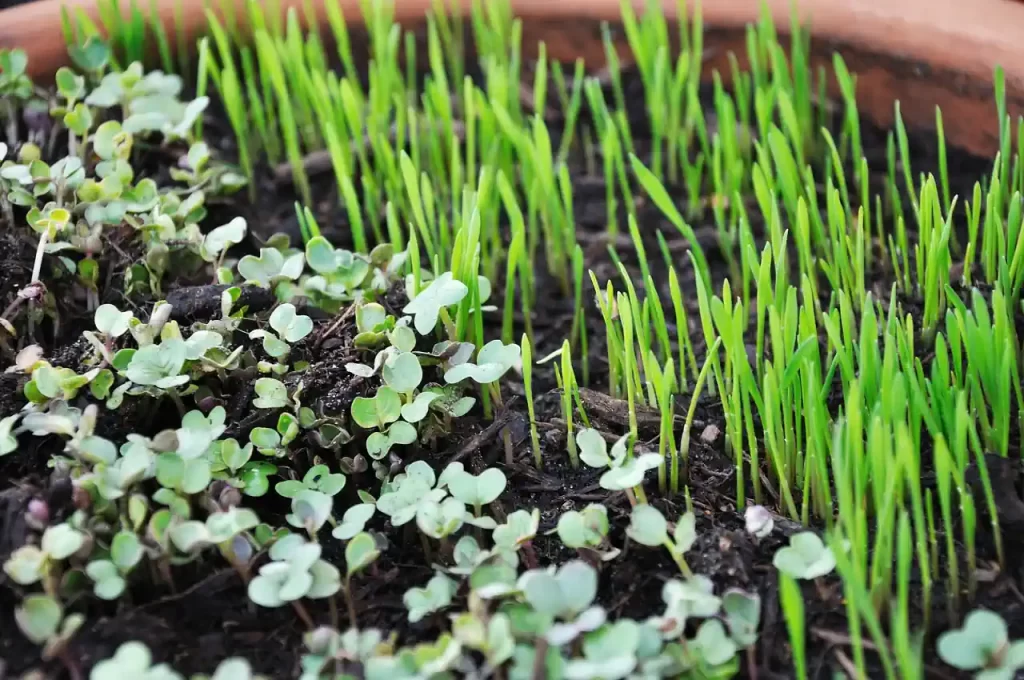
Growing and harvesting your microgreens is an essential step in ensuring high-quality produce that will fetch a good price at market. This includes:
- Maintaining optimal growing conditions:
- Providing the right amount of light for the specific microgreen variety you are growing
- Maintaining the correct temperature range for each variety, some microgreens prefer cool temperature and others warmer
- Ensuring the correct level of moisture in the soil, too much or too little can affect the growth and taste of your microgreens
- Harvesting at the right time:
- Knowing when the microgreens are ready to be harvested, usually when the first set of true leaves appear
- Harvesting when the microgreens are at their peak of flavor and nutrient content.
- Not harvesting too early or too late, as this can affect the taste and nutritional value of your microgreens.
- Packaging and labeling your microgreens for sale:
- Packaging your microgreens in a way that preserves their freshness, such as using perforated plastic bags or containers
- Labeling your microgreens with the variety, harvest date, and other important information, so customers know what they’re buying.
By growing and harvesting your microgreens correctly, you’ll be able to provide high-quality, flavorful microgreens that will be in demand from customers. Proper packaging and labeling will also increase the appeal and trust in your product, making it more attractive for potential customers to buy.
Marketing and selling your microgreens
Marketing and selling your microgreens is an important step in making a profit in the microgreens market. This includes:
- Developing a pricing strategy:
- Researching prices of microgreens sold by competitors and pricing your microgreens accordingly.
- Considering the cost of production, labor, packaging and transportation in your pricing strategy
- Offering volume discounts or membership programs that can help increase your sales.
- Promoting your microgreens:
- Utilizing social media platforms to showcase your microgreens, post pictures, and share stories about your microgreens.
- Creating flyers, brochures or catalogs that can be distributed to potential customers.
- Leveraging word-of-mouth by encouraging satisfied customers to share their experience with their friends and family.
- Building relationships with local chefs, grocery stores, and other buyers:
- Building relationships with local chefs, restaurant owners, and grocery store managers to increase sales.
- Offering samples of your microgreens to potential buyers, this will give them a chance to taste the quality and help in building trust.
- Being responsive and attentive to their needs, such as custom packaging, and prompt delivery.
By developing a pricing strategy that allows you to make a profit while remaining competitive, promoting your microgreens through social media and word-of-mouth, and building relationships with local buyers, you’ll be able to increase your sales and make a profit in the microgreens market. Additionally, It’s also a good idea to attend events and fairs to promote and show your microgreens to a wider audience.
Scaling your operation
Scaling your microgreens operation is a crucial step in growing your business and increasing profits. This includes:
- Identifying opportunities to expand your operation:
- Evaluating the demand for microgreens in your area and considering expanding to new markets.
- Researching new techniques and technologies that can help you increase production while maintaining quality.
- Exploring new opportunities, such as vertical farming, which can allow you to grow more microgreens in a smaller space.
- Managing the financial aspect of scaling:
- Creating a budget that includes all expenses related to scaling your operation.
- Developing a forecasting strategy that allows you to anticipate costs and revenue.
- Regularly monitoring your financial performance to ensure that your operation is sustainable and profitable.
- Continuously researching and exploring new opportunities:
- Staying informed about the latest trends in the microgreens market
- Researching new products and markets that you can add to your product line.
- Exploring partnerships, collaborations, or other opportunities to grow your business.
By identifying opportunities to expand your operation, managing the financial aspect of scaling and continuously researching and exploring new opportunities, you’ll be able to grow your microgreens operation in a sustainable and profitable way. Additionally, diversifying your product line and exploring new markets can help you increase sales, decrease risks and support a steady income.
How Much Money Can You Make Selling Microgreens?
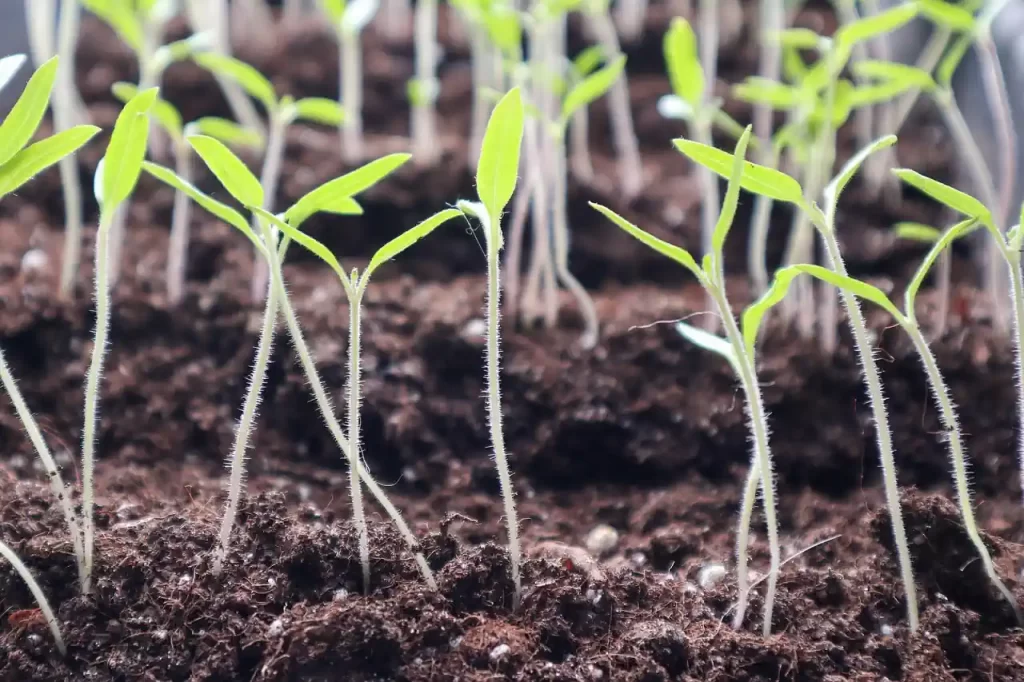
Microgreens are a highly sought-after product, with a high potential for profitability and the average selling price for microgreens is between $25 and $40 per pound. This means that with the right growing conditions and production practices, a microgreens operation can yield a significant profit.
To give you an idea of potential earnings, let’s consider the average yield per tray. Typically, a 1020 tray will yield between 8-12 oz of microgreens per harvest, with a harvest cycle of 7-14 days. This means that each tray will yield between $12.5 and $18.8 in revenue, depending on the specific price point
So how much money can you make selling microgreens?
For example:
- If you sell 8 oz of microgreens for $40 per pound, you will make $20 per tray
- If you harvest 12 oz per tray and sell for $25 per pound, you will make $30 per tray.
It’s important to note that this is just an example and doesn’t take in account costs and expenses that can vary from operation to operation, also factors such as location, competition, and marketing can affect the selling price and sales. However, it gives an idea of the potential for earnings with a microgreens operation. With proper planning, management and marketing strategies, microgreens can be a profitable and sustainable business.
How To Make Your Own Microgreen Seeds?
Growing your own microgreen seeds can be a cost-effective and rewarding way to start a microgreens operation. Here are some steps to follow to make your own microgreen seeds:
- Choose the seeds you want to use: You can use seeds from a wide variety of vegetables, herbs, and other plants to grow microgreens. Some popular options include broccoli, radish, arugula, and wheatgrass.
- Prepare the seeds: Soak the seeds in water for a few hours to soften them and improve germination. Some seeds such as lentils need to be sprouted before sowing for a better germination rate.
- Sow the seeds: Spread the seeds evenly in a tray or container filled with a seed starting mix or a sterile soil. If you are sowing multiple varieties, be sure to label each container with the name of the seeds.
- Provide ideal growing conditions: Microgreens require consistent moisture, a suitable temperature range, and adequate light. Cover the tray or container with a lid or clear plastic to maintain humidity, and keep it in a warm location.
- Check for germination: Check the seeds every day for germination. Once the seedlings have emerged, remove the lid or plastic to allow for better ventilation.
- Transplant or harvest: When the microgreens have reached the desired height, typically around 1-3 inches, they are ready to be transplanted or harvested.
- Harvest and clean: Using clean, sharp scissors, cut the microgreens just above the soil line. Rinse them thoroughly to remove any dirt or debris.
- Store or sell: Microgreens can be stored in a plastic bag or container in the refrigerator for a few days. It’s best to sell or consume them as soon as possible to ensure maximum freshness. They can be sold fresh at farmers markets, to grocery stores, or to restaurants.
By following these steps and providing ideal growing conditions, you can successfully grow your own microgreen seeds and start your own microgreens operation. It is important to note that different seeds have different germination rates, growing time and optimal conditions so research your seeds before sowing, to have a better understanding of the process.
Where to Buy Equipment And Microgreen Seeds?
There are several options for purchasing equipment and microgreen seeds for growing microgreens. Some popular options include:
- Online retailers: There are many online retailers that sell microgreen seeds and growing equipment, such as trays, soil, and lighting. These retailers may specialize in microgreens or may sell a wide variety of gardening supplies. Some popular online retailers include Amazon, Johnny’s Selected Seeds, and Gurney’s Seeds
- Local garden centers and nurseries: Many local garden centers and nurseries carry microgreen seeds and growing supplies. You can find varieties of microgreen seeds that are well-suited to your local climate and growing conditions.
- Local farmers markets: Some farmers markets have vendors who sell microgreen seeds, particularly those vendors who are growing microgreens themselves
- Specialty stores: There are stores that specializes in microgreens equipment and seeds, such as urban-farming suppliers or vertical gardening suppliers
- Directly from farmers: Some farmers sell microgreen seeds directly to consumers and offer a variety of microgreens seeds packs to choose from.
It’s important to research suppliers and select one that is reputable and has a good reputation for providing high-quality seeds and equipment. It is also a good idea to order from multiple suppliers to have a variety of seeds to choose from and improve the chances of success of your microgreens operation.
Secret Microgreen Hacks
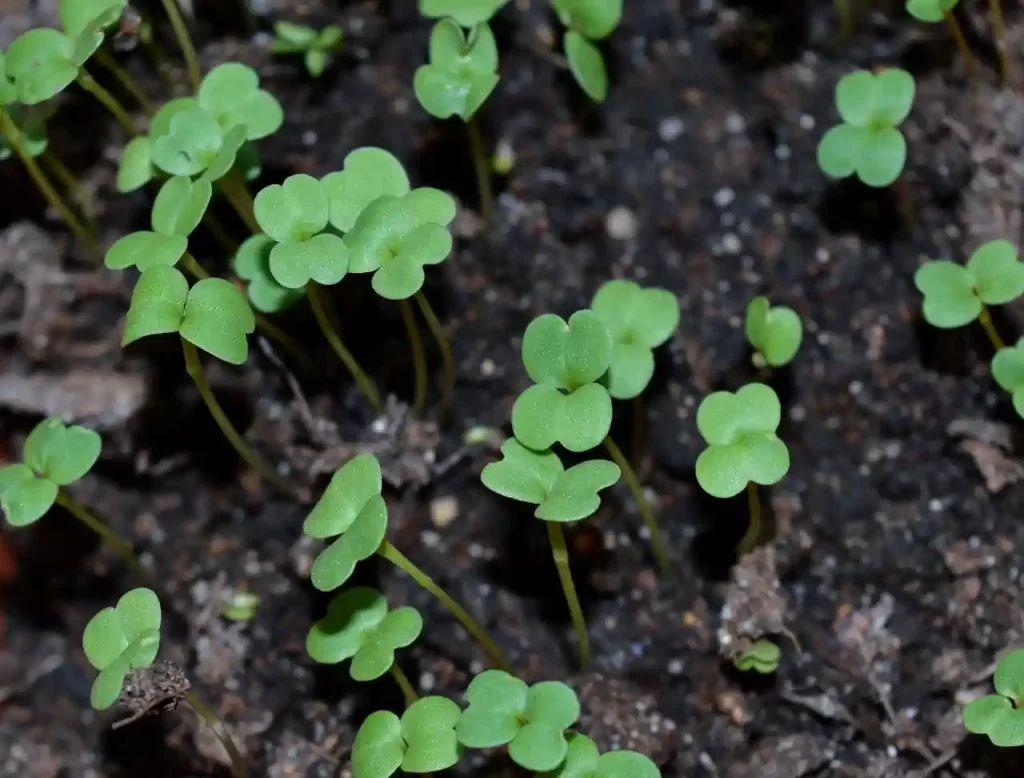
Here are some of my best tips and “hacks” for growing microgreens and I really hope that you like them.
- Use a spray bottle to water your microgreens: Instead of watering from the top, use a spray bottle to mist the soil surface. This can help prevent mold and mildew, and can also make it easier to water seedlings that are growing in tight spaces.
- Use a simple plastic cover: Covering your trays with a simple plastic cover can help keep the humidity levels high, which is essential for microgreens growth. Be sure to remove the cover once the seeds have germinated, to allow for proper ventilation.
- Mix and match varieties: Try mixing and matching different varieties of microgreens to add color, flavor and nutritional value to your microgreens. this can also help you find what sells best in your local market.
- Use natural light: Using natural light for your microgreens can help save on electricity costs, if your space allows for it. Placing your trays near a window or skylight that gets good light during the day can provide the light microgreens need.
- Use a fan: Using a small fan to circulate the air can help prevent mold and mildew, and can also help to strengthen the stems of your microgreens.
- Make your own soil: While you can use commercial soil for your microgreens, you can also make your own soil using a combination of peat
Conclusion:
Growing and selling microgreens can be not only a way to make money, but also a way to benefit from the therapeutic effects of gardening. Not only you are producing healthy, nutrient-dense food, but also you get to enjoy the peacefulness and contentment that comes with working with plants. Learning the process and learning how to make money selling microgreens allows you to focus your attention on the immediate tasks and details, which can help reduce negative thoughts and feelings and promote a sense of well-being.
Additionally, the act of working with plants, being around them and looking at them can reduce stress and boost self-esteem. Selling microgreens not only provides a source of income, but also the opportunity to improve both physical and mental well-being.
Related:

